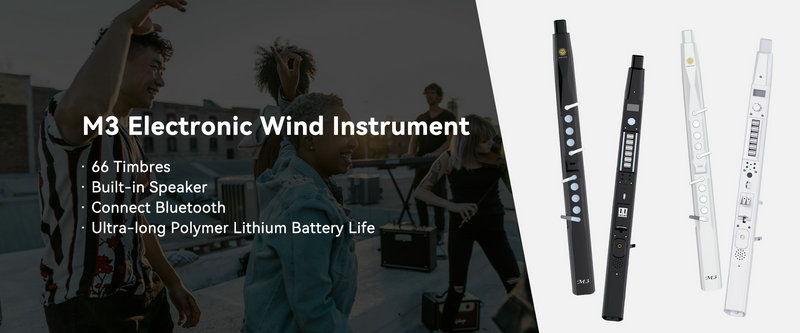The following operations can damage an electronic wind instrument:
Improper Handling:
Dropping or knocking: Dropping the instrument or subjecting it to hard knocks can damage the internal components and circuitry. This can lead to issues such as broken solder joints, damaged sensors, or cracked casing. For example, if the instrument is dropped on a hard surface, it may cause the delicate electronic components inside to shift or break, affecting its functionality.
Twisting or bending: Applying excessive force by twisting or bending the instrument can damage the body and internal wiring. This can disrupt the electrical connections and cause malfunctions. For instance, bending the mouthpiece connector or the body of the instrument too far can damage the internal cables and connections.
Incorrect Storage:
Exposure to extreme temperatures: Storing the electronic wind instrument in extremely hot or cold environments can damage the electronics. High temperatures can cause components to overheat and malfunction, while low temperatures can affect the battery performance and may cause condensation inside the instrument when brought back to a warmer environment. For example, leaving the instrument in a car on a hot summer day or in an unheated garage during winter can cause damage.
Humidity and moisture: Storing the instrument in a damp or humid place can lead to corrosion of the metal parts and damage to the electronic components. Moisture can also cause short circuits and affect the sound quality. For instance, storing the instrument in a basement or bathroom where humidity is high can be harmful.
Power-Related Issues:
Using incorrect power supply: Connecting the instrument to an incorrect power source or using a power adapter with the wrong voltage or polarity can damage the internal circuitry. This can cause the instrument to malfunction or even be permanently damaged. For example, using a power adapter meant for a different device or plugging the instrument into a power outlet with a voltage higher than what it is designed for can be dangerous.
Overcharging the battery (if applicable): If the instrument has a rechargeable battery and is overcharged repeatedly, it can reduce the battery life and may even damage the battery or the charging circuit. It is important to follow the manufacturer's instructions for charging the battery to avoid overcharging.
Playing Habits:
Blowing too hard: Excessive force while blowing can damage the mouthpiece sensor or internal components. It can also cause the sound to distort or become unpleasantly loud. For example, blowing with too much pressure can put stress on the sensor and may lead to inaccurate pitch detection or damage to the sensor over time.
Using corrosive cleaning agents: Cleaning the instrument with harsh or corrosive chemicals can damage the finish and the internal components. It is best to use mild, non-abrasive cleaners specifically designed for musical instruments. For instance, using household cleaners or solvents can damage the plastic or metal parts of the instrument.
SUNRISE MELODY M3 Electronic Wind Instrument - The best-selling Electronic Wind Instrument
. 66 Timbres
. Built-in Speaker
. Connect Bluetooth
. Ultra-long Polymer Lithium Battery Life



